6. Introduction to KiCad
Examples of KiCad projects you should learn from
Now that you have installed your instance of KiCad let’s start your familiarisation with it by looking at one of the examples that come with it. Browse to the KiCad demos folder, and access the one titled 'pic_programmer' (Figure 5.1).
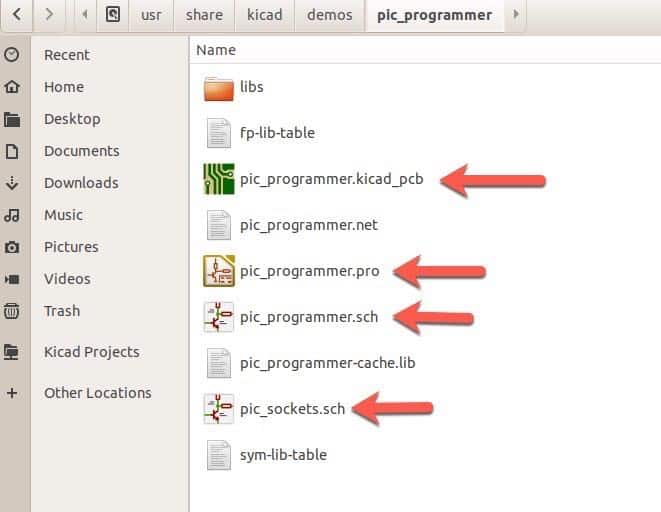
Figure 5.1: The contents of the 'pic_programmer' demo project folder.
The demo project folder contains several files that make up the project. The ones to focus on for now have the extensions ‘pro,’ ‘kicad_pcb’ and ‘sch.’ The file with the ‘pro’ extension contains project information. The ‘kicad_pcb’ file contains layout information. The files with the ‘sch’ extension contain schematic information. There are two ‘sch’ files because this project includes two schematics.
Project file and main window
Double-click on the ‘pro’ (project) file. The main KiCad window will appear. This window is the launch pad for the other KiCad apps, like Eeschema (the schematic editor) and Pcbnew (the layout editor). You can see the main KiCad window in Figure 5.2.
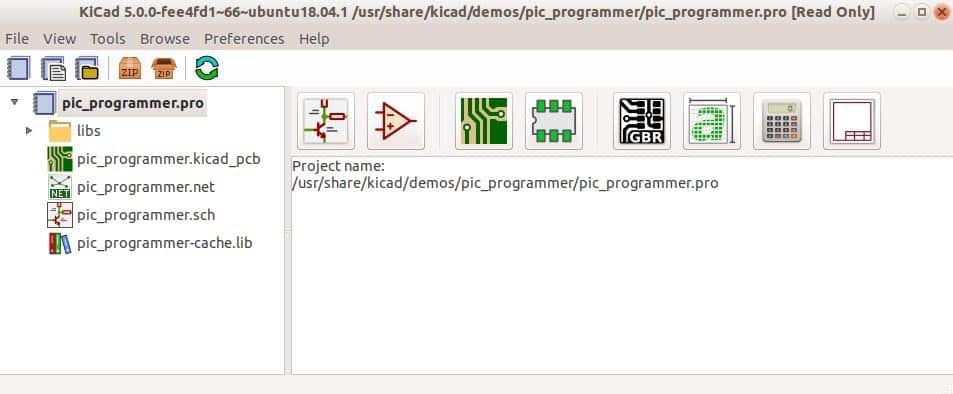
Figure 5.2: The main KiCad window.
The main KiCad window shows the project files in the left pane, the various app buttons in the top right pane, and various status messages in the bottom right pane.
Eeschema - the schematic editor
Let’s explore the schematic of this demo project. In the top right pane, click on the first button from the left. This button will start the Eeschema app, the schematic layout editor. You should see the editor as in the example in Figure 5.3.
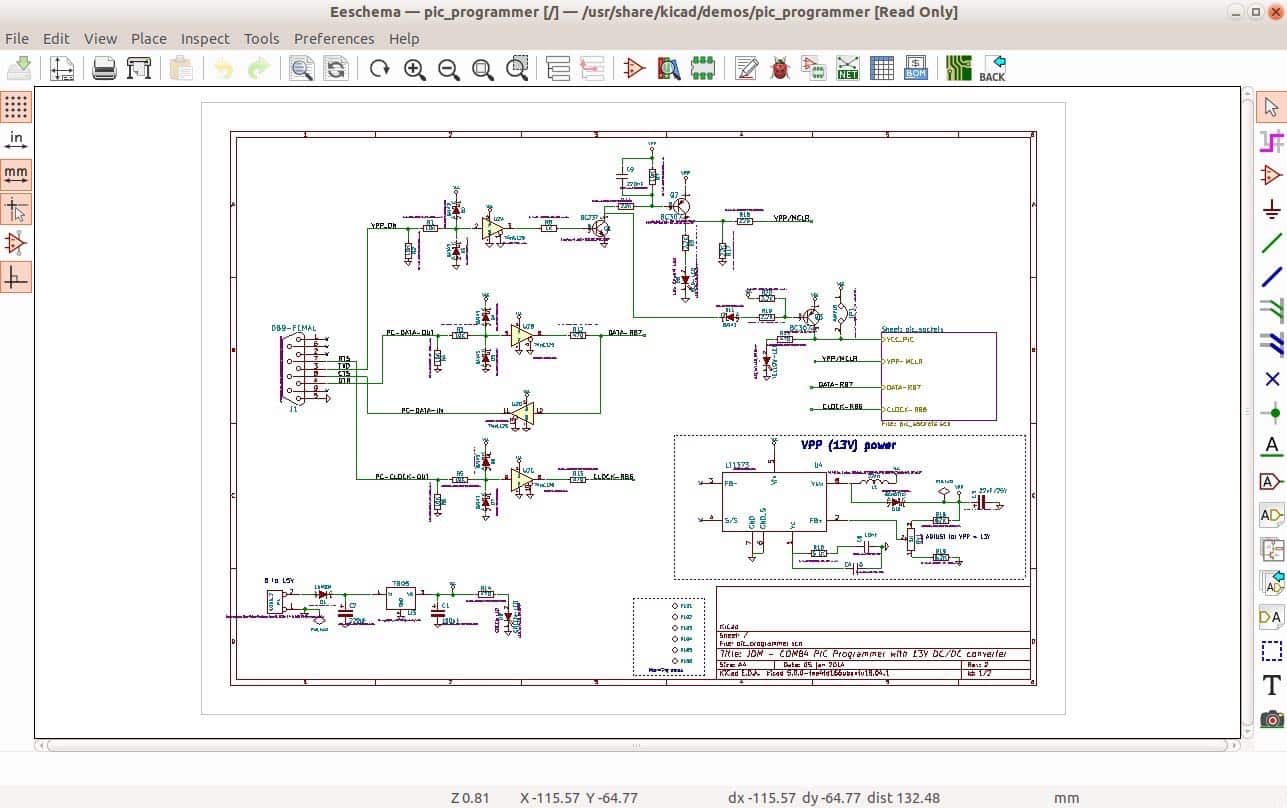
Figure 5.3: The schematic editor.
There are a few things going on here. At first, this window might seem overwhelming. Don’t worry about the various buttons and menus, just concentrate on the schematic itself. Look at the various symbols, like those for the diodes, the transistors, and the operational amplifiers. There are symbols for resistors, and connectors, with green lines connecting their pins. Notice how text labels give names to the symbols, but also to the wirings between pins. Notice how even the mounting holes, at the bottom right side of the schematic, have names. Even though these mounting holes are not electrically active, they are depicted in the schematic. The values of the capacitors and resistors are noted, and any pins that are not connected to other pins are marked with an ‘x’.
In the right side of the schematic, there is a rectangular symbol with the title ‘Sheet: plc_sockets’ (Figure 5.4).
Double click on it. What happened?
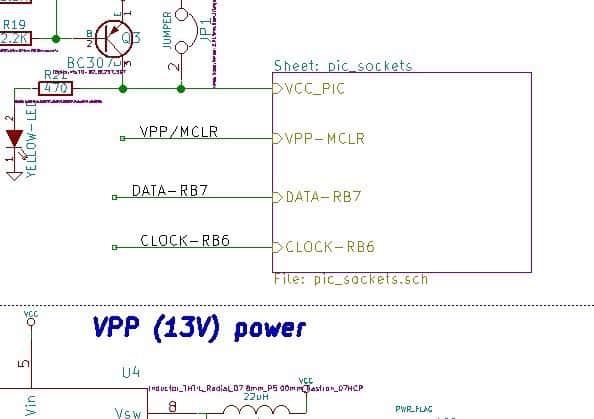
Figure 5.4: A link to another sheet.
This symbol is a link to another sheet, which contains additional symbols that are part of the same schematic. It looks like the example in Figure 5.5.
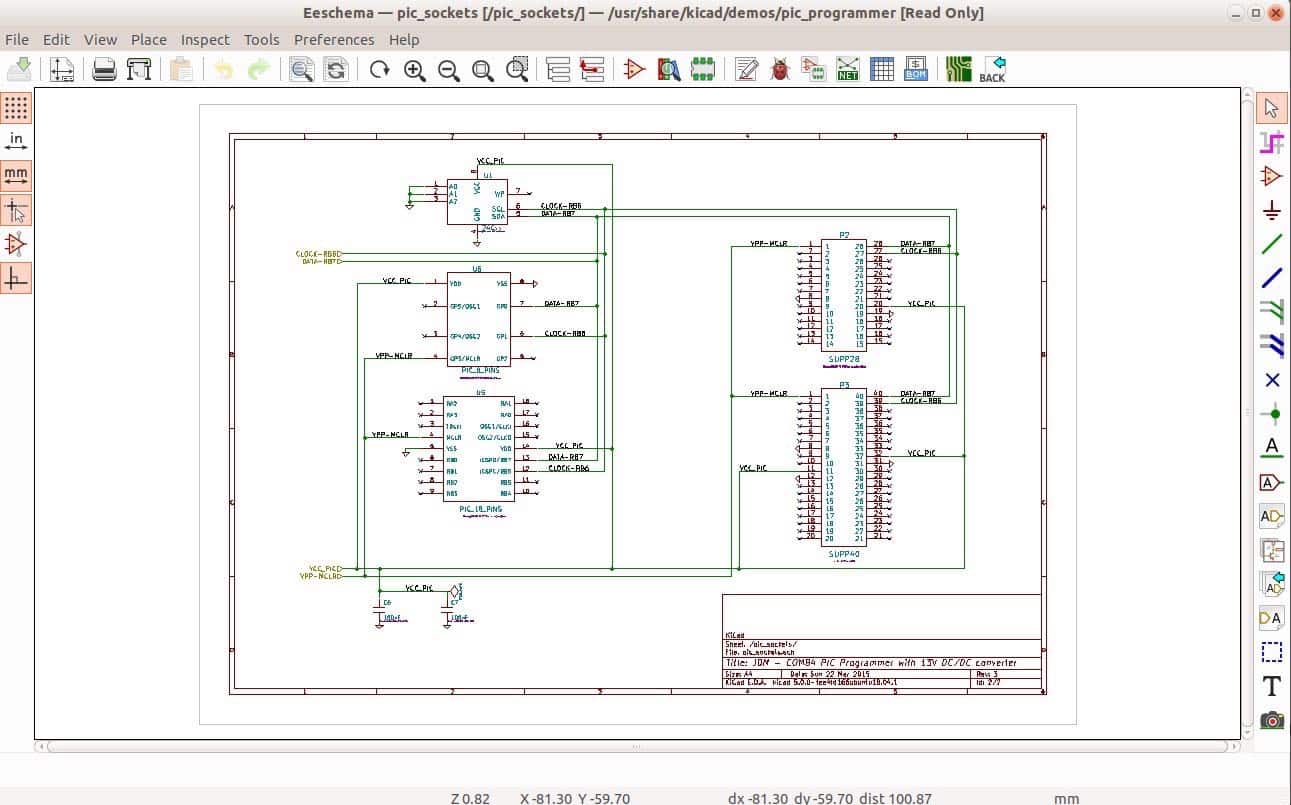
Figure 5.5: KiCad’s schematics can span over multiple sheets.
KiCad’s schematics can span over multiple sheets. If your schematic is too large to comfortably fit in one sheet, just add more (you will learn how to do this in this book).
I encourage you to spend a bit of time to study this schematic. You can learn a lot about how to draw good schematic diagrams by studying good schematic diagrams, just like you can learn programming by studying good open source code.
Pcbnew - the layout editor
Go back to the main KiCad window. Click on the third button from the left, the one that looks like a PCB. This will launch Pcbnew, the layout editor. The window that appears will look like the example in Figure 5.6.
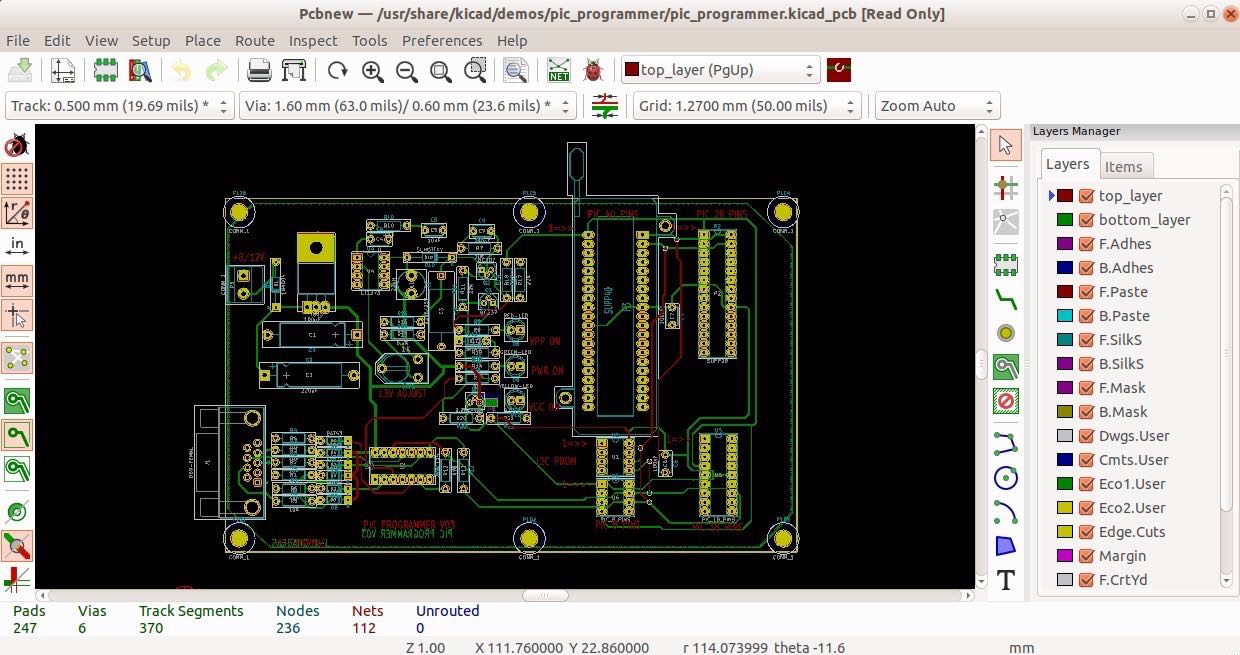
Figure 5.6: Pcbnew, the layout editor.
Again, don’t worry about the various buttons and menus, just concentrate on the layout inside the sheet. Use the scroll wheel of your mouse to zoom in and out, and the Alt+right mouse button to pan (you should also be able to pan by holding down the middle mouse button). Zoom in and look at some of the layout details, such as the pads, how they are connected to traces, the names that appear on the pads and traces, and the colours of the front copper and back copper layer traces. Note: in Linux, panning is done with the middle mouse button, and the alt key is not used.
Also, compare how a footprint in the layout compares to the symbol in the schematic. You can see a side-by-side comparison in Figure 5.7.
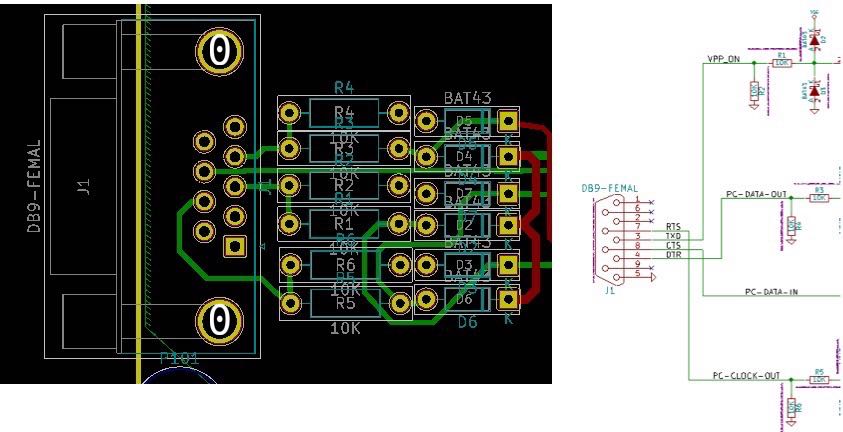
Figure 5.7: A side-by-side comparison of a footprint (left) and its schematic symbol (right).
Associated symbols and footprints have the same designator (J1, in this example), and the same number of pins. The layout shows the traces that correspond to the wires in the schematic.
Everything you see here is configurable: the width of the traces, which layer they belong to, the shape, size, and configuration of the pads. You will learn all of this in this book. In the layout, zoom in the J1 connector to see one of its details: the name of the trace that connects pad 7 of J1 to pad 1 of R5. Traces, like everything else in KiCad, have names. The names of everything that you see in Pcbnew are defined (manually or automatically) in Eeschema.
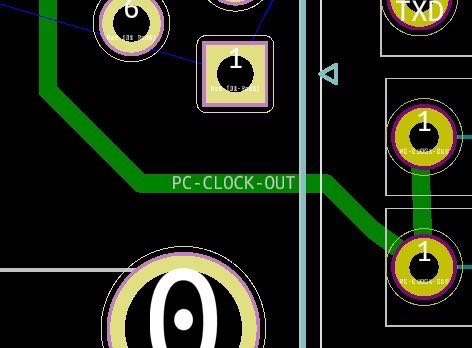
Figure 5.8: Traces have names.
The 3D viewer
Try one more thing: In Pcbnew, click on the View menu, and then choose the 3D Viewer. The 3D viewer will show you a three-dimensional rendering of the PCB, with remarkable detail. You can zoom and turn the board around to see it from any angle you want (Figure 5.9). Many of the components are populated, like the LED, resistors and some of the integrated circuits. For the rest, you can still see their pads and outlines on the board.
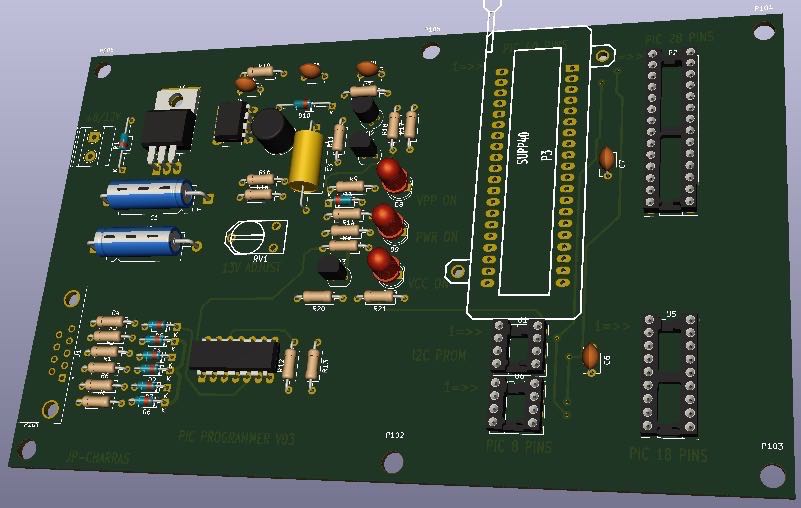
Figure 5.9: The 3D viewer will give you a realistic rendering of your board that you can examine in 3D.
As with the schematic editor, I encourage you to spend a bit of time to study the layout of this demo project. Later in this book, you will learn about the most important layout guidelines that will help you to design well-functioning and elegant PCBs.
Apart from the demo projects that KiCad ships with, you should also have a look at some of the very impressive showcased projects of boards designed using KiCad. For example, the CSEduino is a 2-layer PCB that contains an Atmega328P microcontroller and implements a simple Arduino clone. You will be able to easily create a board like this by the time you finish this book. Got to txplo.re/madewkicad for more examples of projects made with KiCad.
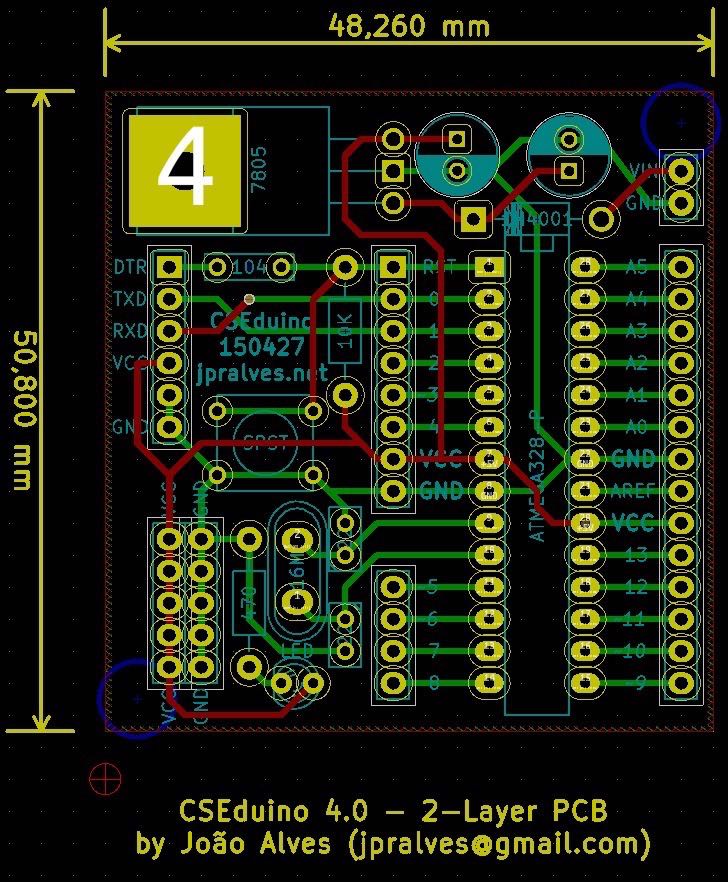
Figure 5.10: Featured board 'Made with KiCad': CSEduino.
Another featured board is Anavi Light, a HAT board for the Raspberry Pi. This is also a 2-layer board that allows you to control a 12V LED strip and get readings from sensors.
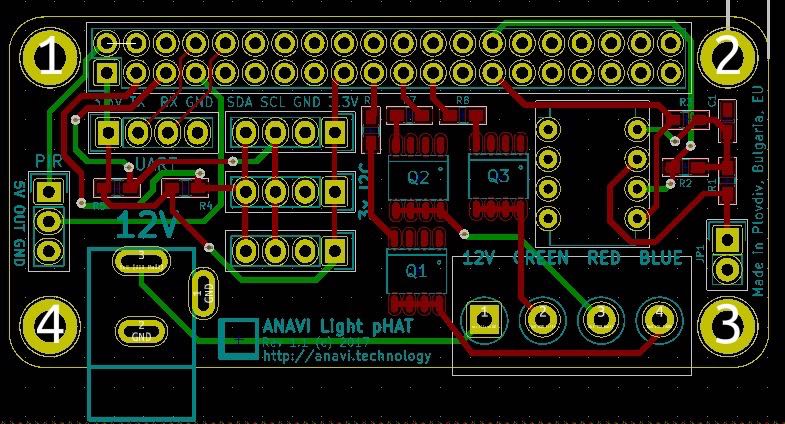
Figure 5.11: Featured board 'Made with KiCad': Anavi Light.
Finally, a truly impressive board made with KiCad is Crazyflie (Figure 5.12). Crazyflie is a dense 4-layer PCB with a rather elaborate shape. The board implements a the flight controller of a tiny drone. The shape is specifically designed to implement the drone’s body and arms. You will also learn how to create PCBs with complicated shapes in this book.
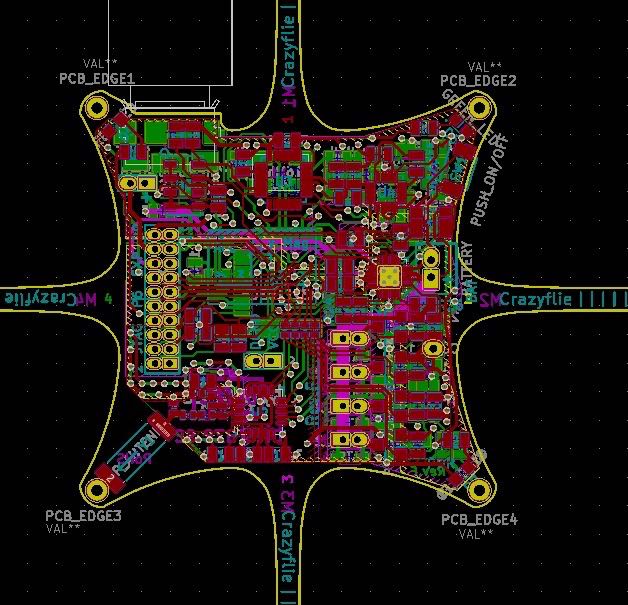
Figure 5.12: Featured board 'Made with KiCad': Crazyflie.
Another featured board is Anavi Light, a HAT board for the Raspberry Pi. This is also a 2-layer board that allows you to control a 12V LED strip and get readings from sensors.
With this chapter complete, you should have a better understanding of the kinds of projects that people use KiCad for. These are also the kinds of boards that you will be able to design by the time you complete this book. Let’s get straight into the first project so that you can start discovering this amazing tool by doing.
KiCad series
Ready to learn KiCad?
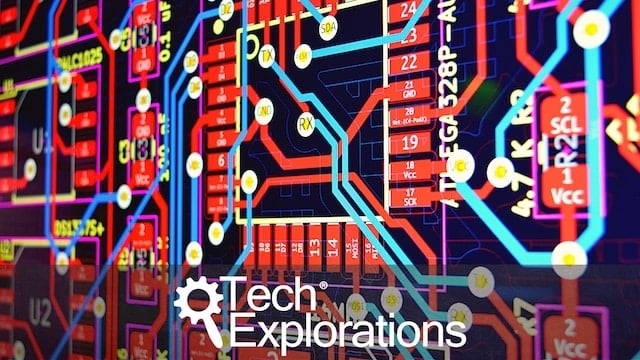
Learn the world's favourite open-source PCB design tool with the world's most comprehensive course
KiCad Like a Pro, 3rd edition is available as a video course or as an eBook.
Choose the version that fits best with your style of learning, or get both to get the full benefit of the video demos plus the details of the eBook.
When you complete KiCad Like a Pro 3e, you'll be able to use KiCad to design and manufacture multi-layer PCBs with highly integrated components and a professional-looking finish.
Work through five projects that give many opportunities to learn and practice all of KiCad's important features.
KiCad Like a Pro 3e contains full sections dedicated to PCB and design principles and concepts. These ensure that you will master the fundamentals so that your PCB project are awesome.
If you are someone who is interested in designing PCBs using KiCad, or moving to KiCad from another CAD application, then KiCad Like a Pro, the video course and eBook, is for you.
Jump to another article in this series.
Last Updated 4 years ago.
We publish fresh content each week. Read how-to's on Arduino, ESP32, KiCad, Node-RED, drones and more. Listen to interviews. Learn about new tech with our comprehensive reviews. Get discount offers for our courses and books. Interact with our community. One email per week, no spam; unsubscribe at any time
